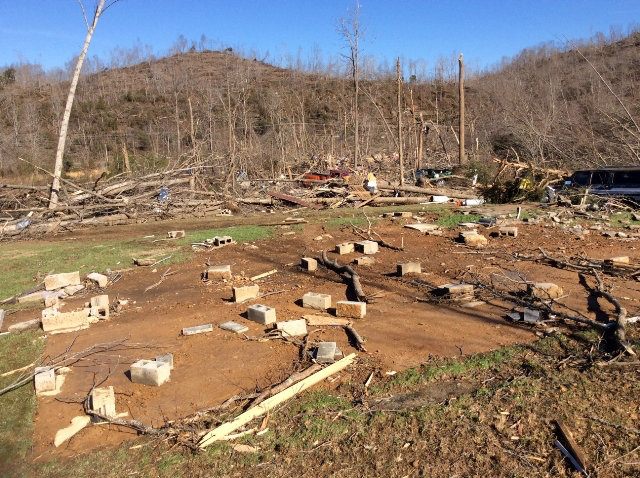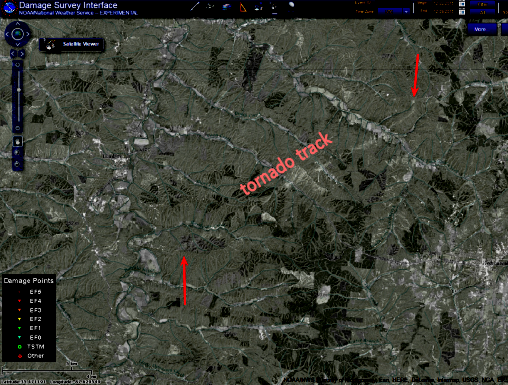
Photo credit: NOAA

National Weather Service (NWS) Nashville sent out three storm survey teams to evaluate all of the damage from these tornadoes on Christmas Eve and again on Christmas Day. Unfortunately, the affected areas were very rural and mostly inaccessible to the storm survey teams, with few roads available to evaluate damage indicators or determine beginning and end points. Thankfully, Landsat 8 imagery was available in the online Damage Survey Interface* (DAT beta version) that depicted the swaths of blown down forests along the tornado paths that tracked through areas where the storm survey teams could not access. Landsat imagery allowed NWS Nashville personnel to extend two of the tornado paths by several more miles than originally estimated.
*Since April 27, 2011, NASA’s Short-term Prediction Research and Transition, or SPoRT Center, has provided satellite imagery to the NWS to assist with their damage surveys. Starting 2012, SPoRT began incorporating imagery into the NWS’s Damage Assessment Toolkit, or DAT. The DAT is a smartphone, web browser, and tablet application that allows NWS meteorologists to go out in the field and perform a detailed storm damage survey. SPoRT incorporates various satellite imagery, including Landsat 7 and 8, into the DAT as an extra layer of information that NWS meteorologists can use to compare to their storm survey track. {details provided by NASA Research Meteorologist Andrew Molthan}






